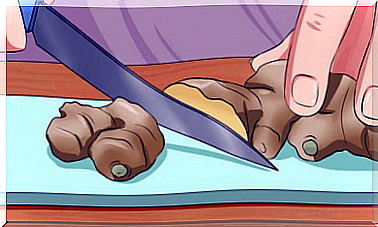The Carpal Tunnel Syndrome And Its Treatment Options
The carpal tunnel syndrome can be treated quickly and easily by surgery.

The longer carpal tunnel syndrome is left untreated, the less likely it will be to heal without surgery. So pay attention to the smallest symptoms and take countermeasures as soon as possible.
Carpal tunnel syndrome: symptoms
In most cases, makes the carpal tunnel syndrome with a slight tingling and numbness felt in his hands. Often these symptoms go away again or they radiate into the arm. Classically, the complaints are limited to the fingers from the thumb to the middle finger, which then feel like “asleep”.
During activities in which the wrists are bent (talking on the phone, cycling, sleeping …) the symptoms increase, but can usually be reduced again by rubbing the affected areas.
In the later stage, the symptoms appear permanent. You may occasionally feel an electric shock when you access it.
What exactly is carpal tunnel syndrome?
The carpal tunnel syndrome is often confused with the “mouse arm” or “tennis elbow”. A very simple differentiation criterion is pain at night. So if your wrist hurts at night in peace, then you can exclude the “mouse arm” and should see the doctor about a carpal tunnel syndrome.
In carpal tunnel syndrome, the nerves in the hand area are damaged and cause abnormal sensations and pain. Important tendons and nerves run through the carpal tunnel in the carpal ligament. The carpal tunnel itself is the space between the carpal bones and the carpal ligament.
The median nerve, which is responsible for controlling the fingers from thumb to middle finger, runs in the carpal ligament. In carpal tunnel syndrome, the nerve is narrowed and pressurized. This leads to a restricted function, because if the nerve is disturbed, it can no longer work properly and symptoms arise.
causes
There is not a single cause that leads to the development of carpal tunnel syndrome. It is often a combination of several triggers that triggers symptoms. The most common causes are:
- Swollen tendon sheaths (due to overload, inflammation, rheumatism, metabolic disorders, …)
- Anatomical misalignment of bones, for example the carpal bones
- Poorly healed fractures on the forearm or wrist
- Arthrosis in the wrist
- Dislocations in the area of the forearm and wrist
Usually an overload is the main trigger factor for the complaints.
Risk factors
There are also certain risk factors that increase the likelihood of developing carpal tunnel syndrome. This includes:
- diabetes
- rheumatism
- pregnancy
- Alcohol abuse
- Hypothyroidism
The work on the computer, the keyboard and the mouse, as well as sport (e.g. cycling) are not seen as the cause. Such loads lead to other complaints, such as tendinitis and the so-called “tennis elbow”, but not to carpal tunnel syndrome!
prevention
Make sure that tendonitis heals completely before putting pressure on the area again. Make sure that the handlebars of your bike are correctly adjusted. Avoid work that will severely bend your wrist. If these are unavoidable, take breaks from work.
Make sure that you sleep in a position where your wrists are straight and don’t rest at excessive angles for hours.
Carpal tunnel syndrome: treatment options
If you recognize a carpal tunnel syndrome in good time, it may be sufficient to bandage or splint your wrists at night to prevent them from kinking while you sleep.
Even on days such a rail may help. Additionally, the doctor may prescribe anti-inflammatory drugs that must be taken regularly to achieve the desired result.
Also, decongestant or anti-inflammatory injections can help. If these methods do not help, the carpal tunnel syndrome must be operated on. The operation is usually performed on an outpatient and minimally invasive basis. So you can go home quickly and only have a very small incision wound on your wrist.
During an operation, the ligament above the carpal tunnel is split with one incision so that it still retains its function, but the nerves in the carpal tunnel have more space. The pressure on the nerve is reduced and it can function properly again.
It is important not to wait too long with this small and usually uncomplicated operation. If the carpal tunnel syndrome continues for too long, muscle wasting can occur in the hand. It is difficult to rebuild the muscles after a successful operation in order to regain full range of motion and strength of the hand.









